Public Pier — No Fishing License Required
One day on the PFIC message board we received a note from an angler who had visited the Ferry Point Pier: “The pier was OK. But the thing that is right next to it makes it too depressing to fish. So I left.” Another angler then asked: “What is next to the pier?” The answer: “I think it’s the old ferry dock that’s been burned down. It’s right next to the pier. So you could only fish from one side of the pier.” Finally a long time regular chirped in: “That is an old ferry loading pier. Originally the plans for that area included using that old structure as part of the whole pier, but the idea was scrapped because of budget constraints. Sorry you find it depressing… I rather enjoyed it when I fished that pier. Granted it’s not much of a pier, but I liked it… caught the biggest leopard I’ve caught off a pier there.”
I too find it an interesting pier and in part because of those old ruins. As a former history teacher, I think it gives a reflection back into a bygone era, an era that was exciting at the time but seems to be of little interest to the modern generation.
Of course the subject here is a fishing pier and the rotting pilings, the remains of a rusting ferry landing, and a decrepit old building near the front of the pier may simply seem an ugly eyesore to many. Then again, when I spotted the mass of old pilings on my first visit to the pier my immediate thought was — what great attractants for perch. We all see things differently and interpret what we see in different fashion.
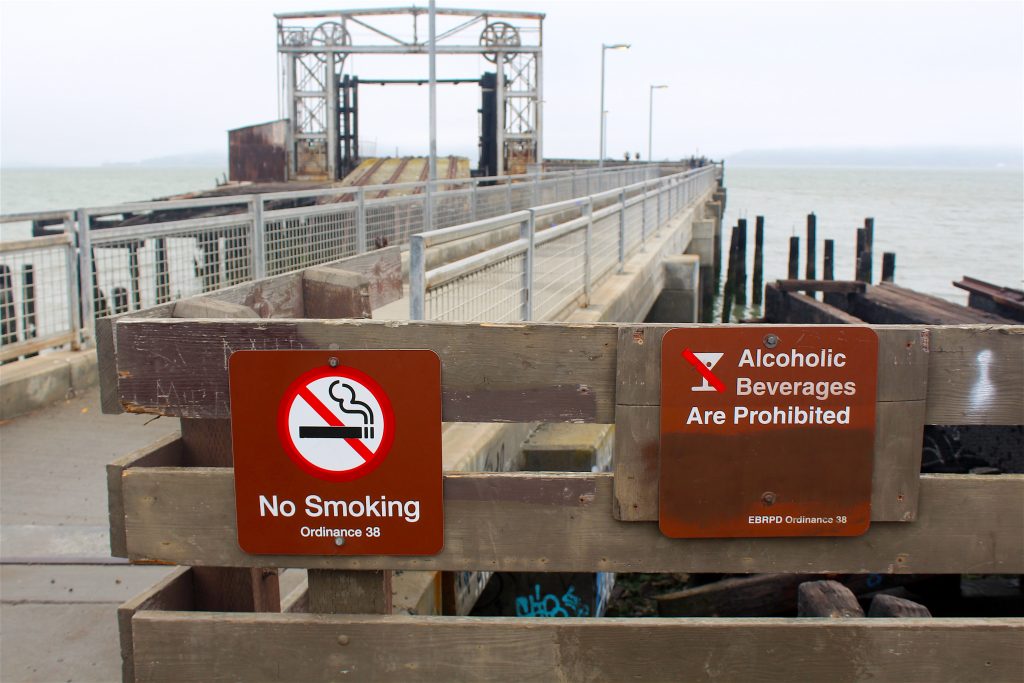
What cannot be argued is that an initial lack of funds, and consequent inability to extend the pier out to the edge of the old landing as originally envisioned, has undoubtedly hurt the fishing to some extent. A longer pier would have meant access to deeper water — and more fish. To what extent the fishing would be better is impossible to say.
Certainly the initial expectations were high — “This will be the crown jewel of fishing piers,” said Jean Siri, a director for the park district. “There is deep-water access, that’s the beauty of it. It’s really good fishing. Families and kids will love it.” —Tom Stienstra, Outdoors, San Francisco Chronicle, February 28, 2001
But the deep-water access is largely missing and the crown jewel turns out to be a faux jewel. The pier still produces some excellent action at times but you just wonder how good the fishing might have been?
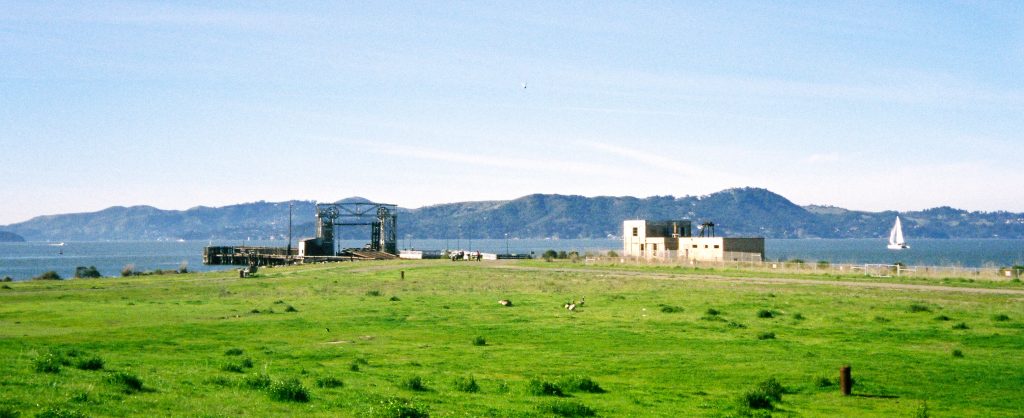
Environment. The pier sits in Ferry Point Park, which is part of the larger Miller/Knox Regional Shoreline. A short distance to the north sees Keller Beach Park and beyond that the residential Point Richmond district. Just past Point Richmond are the Richmond-San Rafael Bridge and the dividing line between San Francisco Bay and San Pablo Bay.
The pier itself sits at the tip of Point Richmond, the terminus end for the one time very important Santa Fe Railroad. The railroad carried passengers from throughout the U.S. to the point and from there a ferry was needed to carry them to San Francisco. The ruins of that ferry landing hug the left or south side of the pier.
The pier extends 550 feet into the bay into waters that are moderately deep, the bottom is primarily mud, and water currents can be strong when there is a large incoming or outgoing tide.
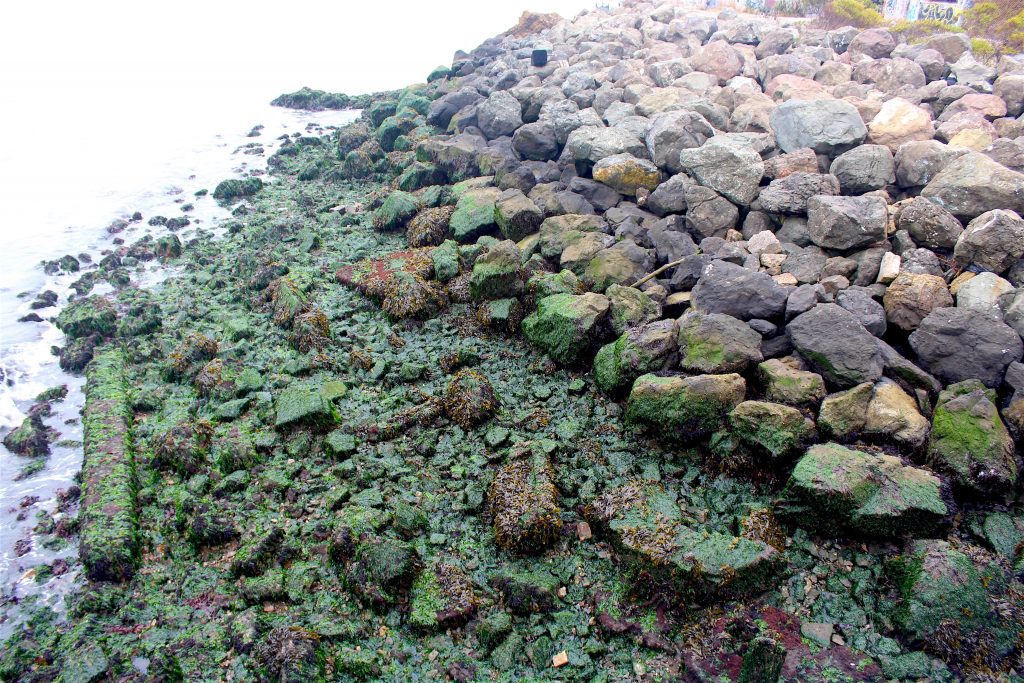
The shoreline is rock-lined and heavily covered with vegetation. In addition, there are quite a few rocks (and other unseen debris) on the bottom by the pier to attract fish. Last but not least are many, many old pilings in the water which also act as attractants for fish. The pilings do not seem to contain many mussels but are mainly covered by barnacles.
Anglers are presented two quite different and distinct areas to fish. The “backside” of the pier, next to the old ferry landing, has fairly shallow water that is heavily clogged by those old rotting pilings and miscellaneous pieces of indefinable machinery. This is primarily perch territory and a plethora of perch species can show up, everything from small shinerperch and dwarf perch to the larger blackperch, pileperch and rubberlip perch.
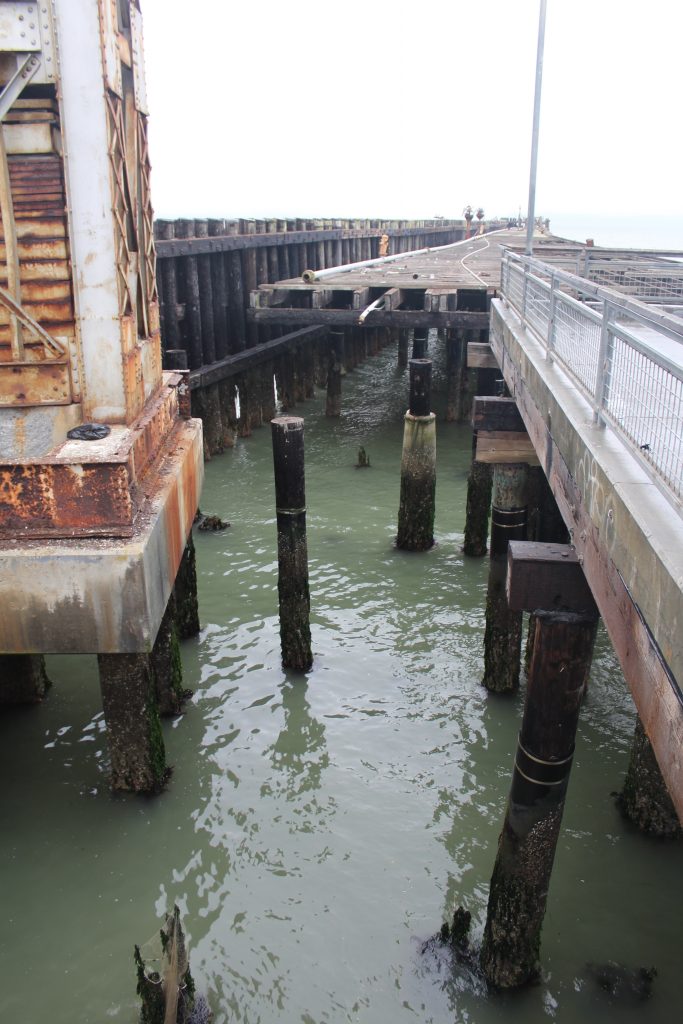
The “frontside” of the pier faces directly into the bay and is home to the deeper waters and a variety of fish. It’s still home to perch but added into the mix are a number of other species — jacksmelt, kingfish (white croaker), brown rockfish, starry flounder (less and less each year), halibut, sharks and rays.
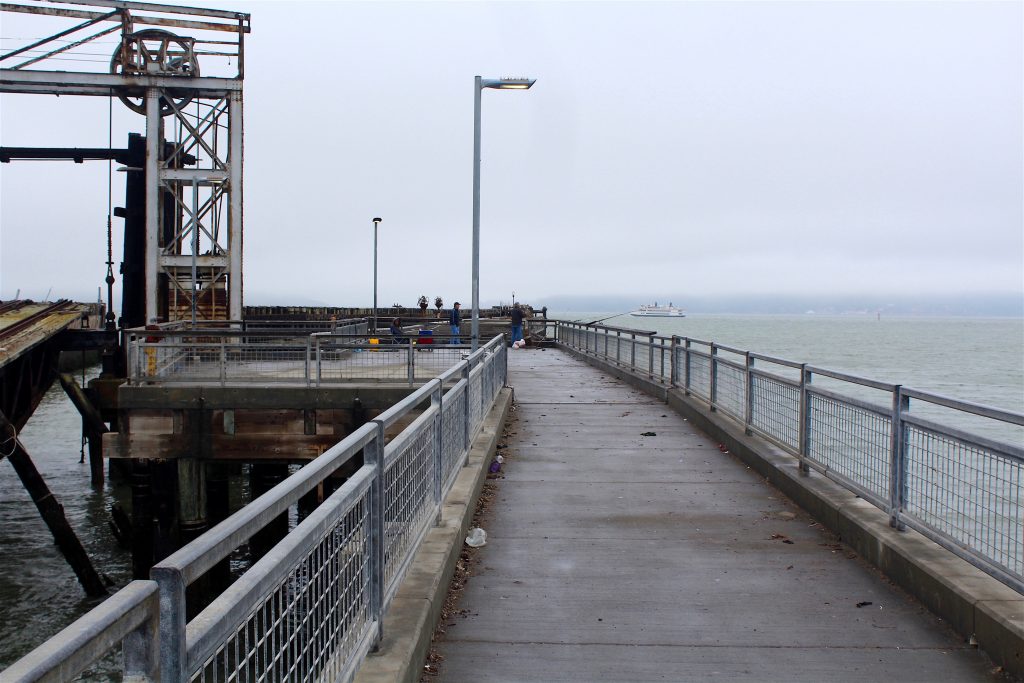
In addition, these waters are in the migratory paths of three large gamefish — striped bass, sturgeon and salmon. All are anadromous species that spend part of the year in saltwater before heading inland into fresher waters to spawn. Typically, the stripers and salmon migrate down into the bay and ocean during the spring months. Some stripers stay in the bay while some move into the ocean, all of the salmon move into the ocean. Later, in the fall, they reverse course and migrate back up through the bay, into the Carquinez Strait, and finally reach the waters of the Sacramento-San Joaquin Delta and inland rivers.
The sturgeon too migrate back and forth but often they are found in the largest numbers in San Francisco Bay during the winter months when the herring come into the bay to spawn.
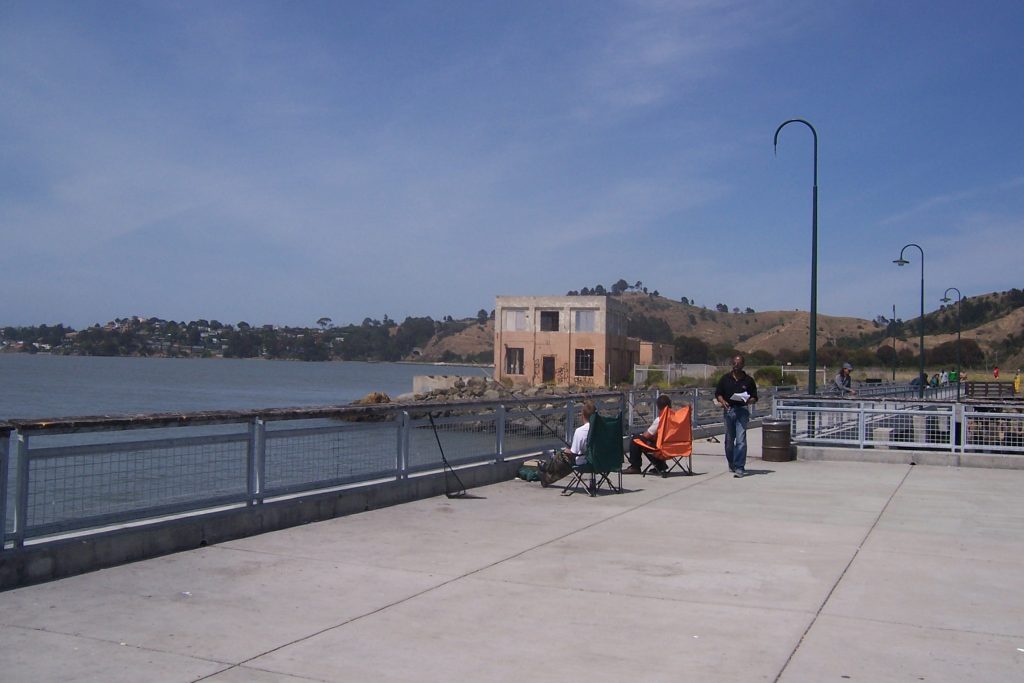
Fishing Tips. As said, anglers are faced with two distinct fisheries, the “backside fishery” facing the old landing and the “frontside” fishery” facing the bay.
Backside — almost every species of perch taken in central and northern California has been taken at the pier. Nevertheless, local, resident bay species predominate. Small shinerperch are found year round as are small dwarf perch. Ditto the larger blackperch (aka buttermouth or pogie). Both whiteperch and pileperch can show up throughout the year but traditionally the winter and early spring months have been the times when big schools of big pileperch flooded into local waters. Rubberlips, striped perch, and rainbow perch can make an appearance throughout the year and surprisingly even some of the large surfperch—redtail and calico surfperch. Smaller walleye and silver surfperch are more common in the summer and fall months.
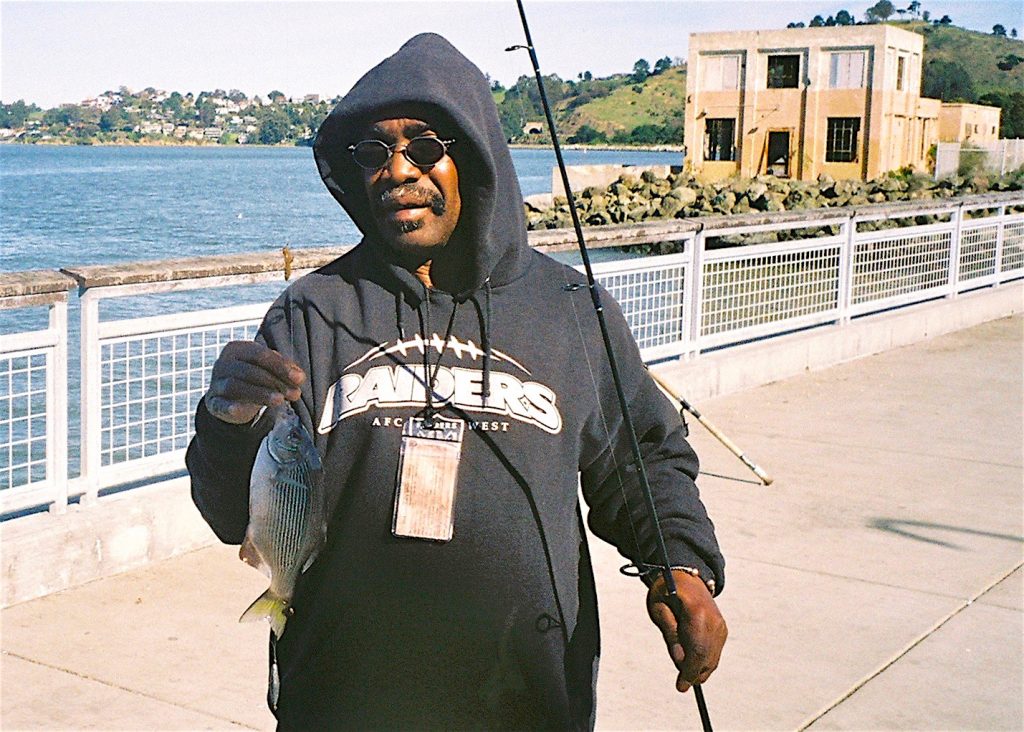
The perch fishery isn’t complicated; the key is the right bait and fairly small hooks. Pile worms have traditionally been the primo bait for all of the perch. However, grass shrimp (if you can find it), ghost shrimp, and small shore-crabs (look under the rocks) often work better for the large pileperch and rubberlip seaperch. Small pieces of market shrimp can work if the aforementioned baits are unavailable and, surprisingly, sometimes will out fish the more expensive live bait.
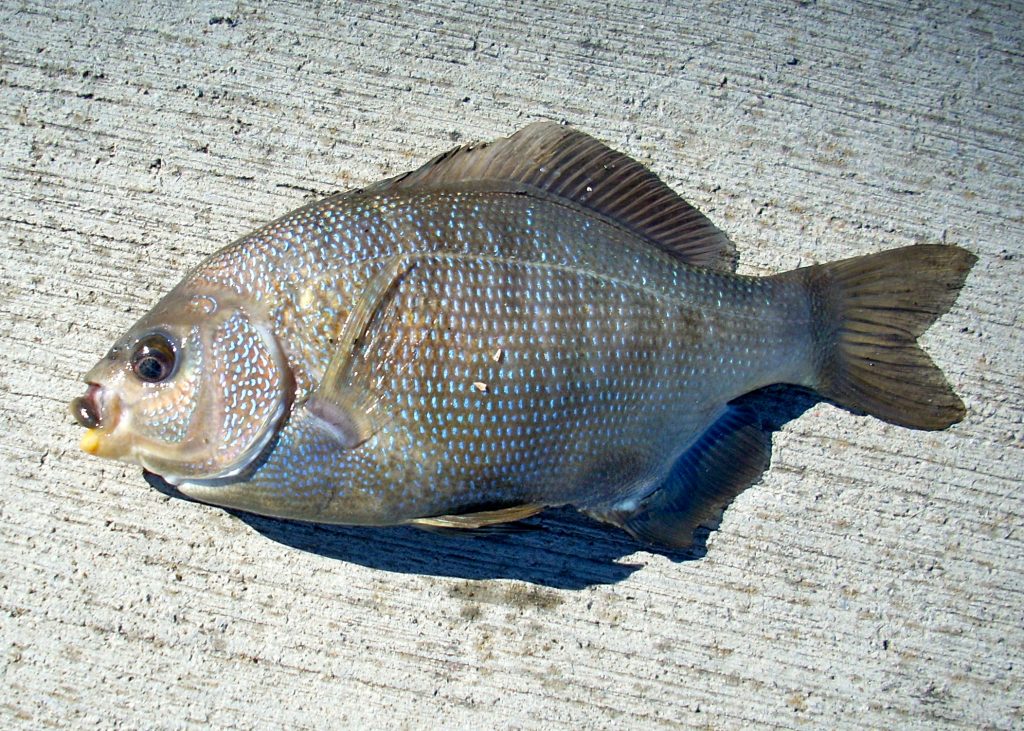
Do remember to keep your hooks small—size 6 or 4—and your line fairly light (although when the perch are in a feeding frenzy it sometimes doesn’t seem to make much difference). All are caught on the bottom although the pileperch will at times be at a mid-depth level.
The smaller walleye and silver surfperch can be taken in the same manner but size 8 or 6 hooks are preferred and the schools containing these smaller perch are several feet up from the bottom. Sabiki-type bait rigs will also work for these perch along with the shinerperch but remember if using a Sabiki that you must remove three of the hooks since the maximum amount of hooks on a line is three.
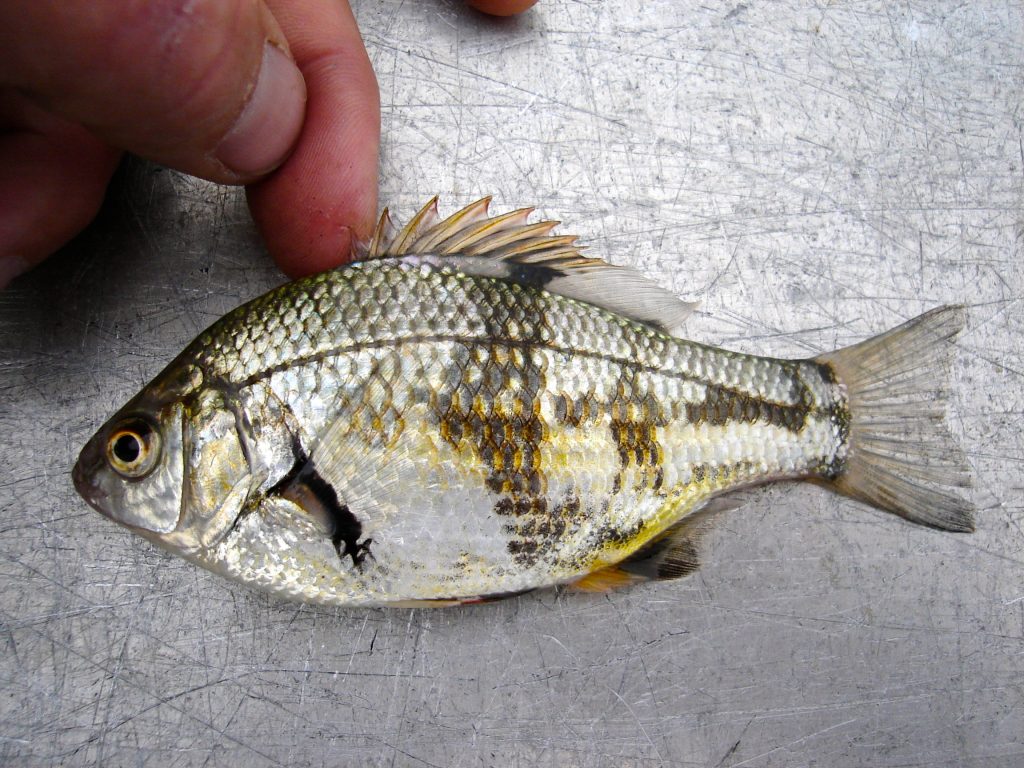
In regard to the shinerperch, they are one of the pier’s standby fish and though small, make excellent bait for halibut. Before the Berkeley Pier was closed, anglers would travel to this pier to catch some shiners, then move back over to Berkeley for the halibut. Since the closure of the Berkeley Pier, locals simply catch and then use the shinerperch as bait for halibut at this pier.
It must be noted though that there is a special perch closure in San Francisco Bay. No perch may be taken from April 1 to the end of July excepting for shinerperch (so live halibut bait is still available).
The “backside” may also produce a number of other small fish on the bottom but most will be “throw-‘em-backs’ — incidental species too small to keep or use. Included are several varieties of small sculpin including bonehead sculpin, smoothhead sculpin, and small cabezon. Often found under the rocks and occasionally caught by hook are midshipmen, blennies and a variety of gobies including yellowfin gobies and chameleon gobies.
One final fish reported by the backside anglers are monkeyface eels (pricklebacks). People fishing down around the inshore rocks have reported a number of the gnarly creatures.
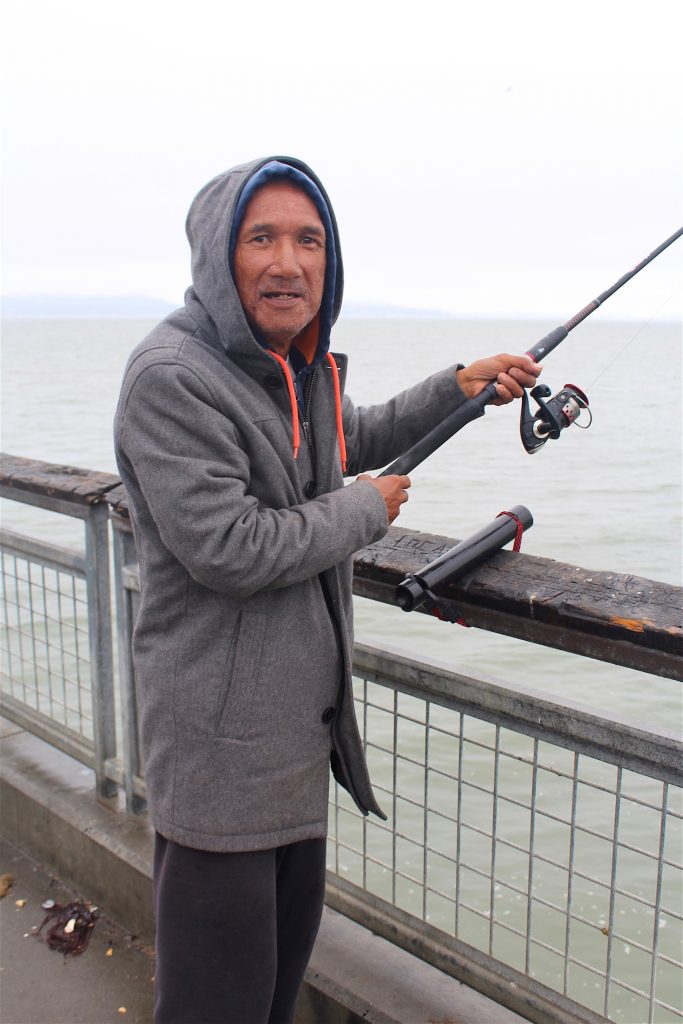
Frontside — More species are available. Jacksmelt are a common catch and when one shows up there will generally be more, in fact usually many, many more. Use two or three size 8 or 6 hooks baited with pile worms or small pieces of market shrimp and fish the rig under a float of some type. Be prepared to strike as soon as the float disappears under the water’s surface. As often as not you’ll have two or three fish on your line at a time and sometimes the smelt will be the big horse smelt approaching 12-15 inches in length.
White croaker, locally called kingfish, are a common catch (although the numbers seem to be showing a slow decrease). They are most commonly caught on a high/low rigging using a size 4 or 2 hook baited with cut pieces of anchovy although they also like pile worms, pieces of shrimp, and other cut baits; they’re non-discriminatory in what they eat. They aren’t too big and aren’t much of a fighter but people still pursue them. Unfortunately, none should be eaten from the local waters. Their main food is the bottom inhabiting creatures living in and on the toxic mud on the bottom of local waters. The kingfish ingest the toxin-filled worms, clams, etc., the toxins then lodge in the kingfish, and then the kingfish that are now full of toxins themselves are eaten by bigger creatures, i.e., bigger fish, seals, sea lions, birds — and humans. All have now been exposed to those toxins. It’s best just to throw ‘em back.
Flatfish are also a possibility with halibut being the hoped for prize. Surprising to me was the number of halibut taken from the pier once the “halibut regulars” moved over to Richmond once the Berkeley Pier was closed. The regulars at the pier who fish for halibut seem to prefer the last three railing sections on the left end of the pier for the halibut. The majority will use live bait if they can get it. Some will try to net some shiners or small smelt at the pier, some will try to Sabiki-up some baitfish, and some will head over to the Berkeley Marina and visit the K-Dock for some live anchovies.
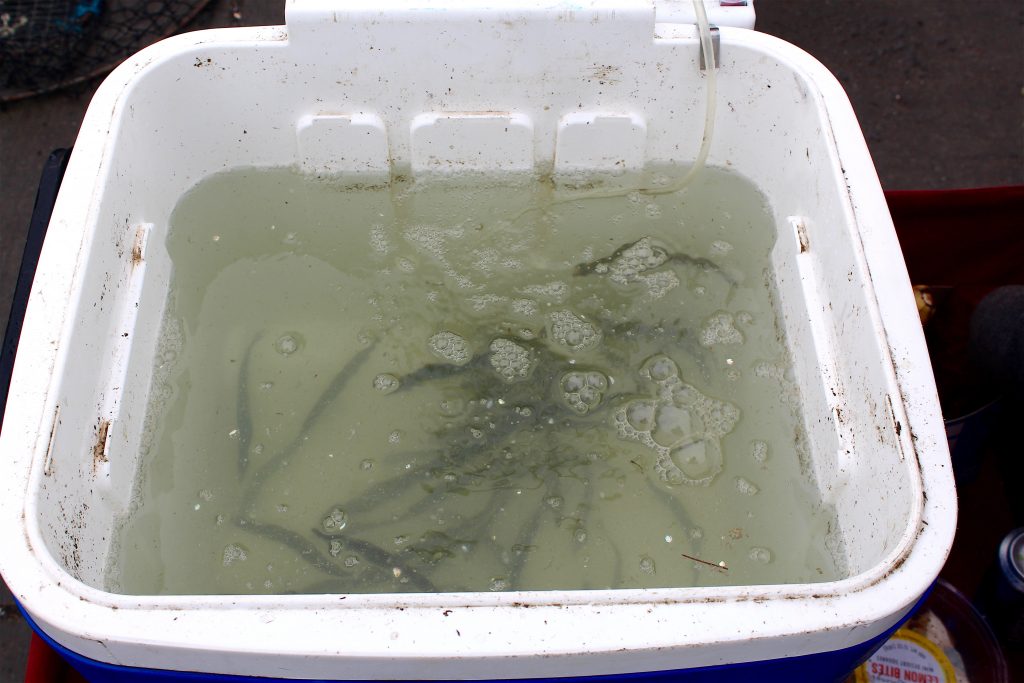
Of course you need to keep the live bait lively so regulars use 5-gallon buckets or coolers together with an aerator to keep the bait alive. The bait is then used with a sliding sinker rig or with a Carolina-type rig that allows the bait to swim in a natural fashion. It’s amazing how much the chances for halibut are increased using live bait! However, there’s also a fraternity of regulars who prefer to toss out a lure for the halibut, usually a soft plastic lure, and they pull in a fair number of the flatfish.
Less common but a possibility are sand sole (spring through fall) and starry flounder (primarily in the winter and spring months). Most of these flatfish will be caught on pile worms, ghost shrimp, grass shrimp or cut anchovies. Both high/low rigs and sliding sinker rigs will work for these fish. Some years a few Pacific sanddab may also show up. Small, size 6 or 4 hooks are used for the sanddab and if present they may be caught 2-3 at a time.
Most any month may produce small brown rockfish although summer months are peak. They are really too small to keep but give great fun for the youngsters in the group. Use size 8 hooks on a high/low rig and bait up with pile worms or small pieces of shrimp.
Striped bass are, of course, one of the most popular species. Best times will be the spring and fall months with a variety of baits and lures producing the fish. Favorite baits include cut anchovies and sardines, pile worms, ghost shrimp, bullheads (staghorn sculpins) and mudsuckers (longjaw gobies). High/low rigs with hooks size 2 to 2/0 as well as sliding sinker rigs can be used for the bass. Popular lures include Fish Traps, Hair Raisers, Rapalas and Kastmasters.
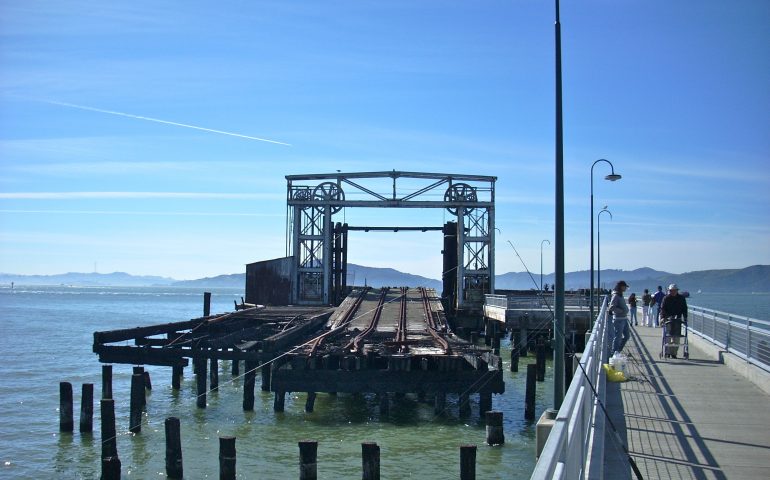
Very well done article Ken!
Robert, Thanks for your input! I made several changes based upon what you told me.
Good fishing tips! I like that included local history as well.
Ken, the extension of the pier would undoubtedly provide more room to accommodate additional anglers. I can’t really say the extra footage would improve angling based on the kayakers and boaters I see fishing that area. I don’t see them doing any better. I know the unreachable area off the back of the pier holds more perch that cannot be reached from the pier.
Agreed! Initially it was supposed to be longer.
I fished the area almost every weekend when I was a young teenager. We would ride our bicycles down at 5am and fish until noonish. Catch enough for family dinner and get down in time to cut the lawn. Grass Shrimp cost $1 a pound so that tells you how long ago. After reading this I can’t wait to drive down from Fairfield
just to give it a try on this new pier.
I was disappointed that there was not more detailed description of the planning and construction of Ferry Point. It would be interesting for the reader to be able to go back in time and imagine himself building Ferry Point,s structure and watching the first trains cross it. Photographs of this event would be even more exciting to those who love history such as this.
I enjoy visiting Ferry Point from time to time.
I too enjoy reading and writing about the history of the piers but this is, after all, a fishing site and article and some people already complain that the articles are too long. A longer history will have to wait for another day.
Great article! Thanks for sharing! I live in fairfield now but lived in richmond for 18 years. Me and my stepfather who has passed on used to fish the banks for stripers when the limit was three! I’m glad they built a pier but before that I fished the area when it was fenced off. I used to catch huge rubberlip perch there
.
Just trying to enjoy the little things in life today. Here’s to finding joy in the moments that usually go unnoticed. Life’s more beautiful when we take a closer look.